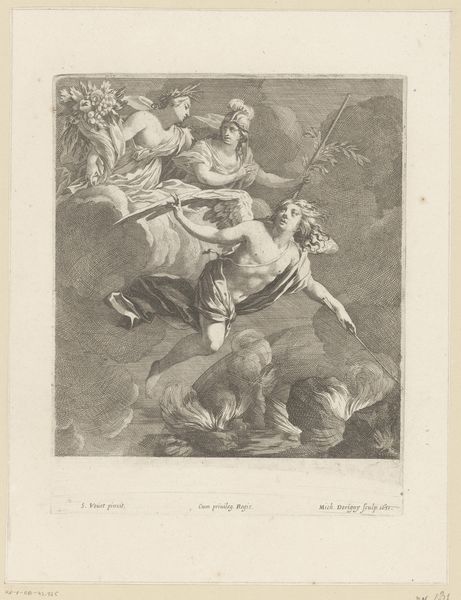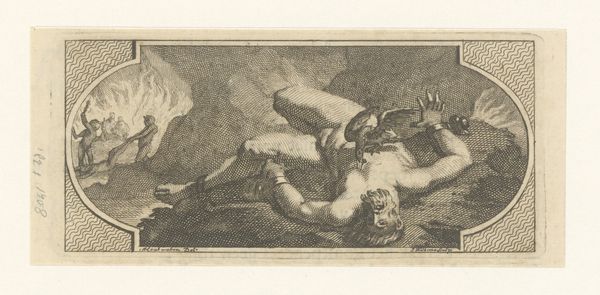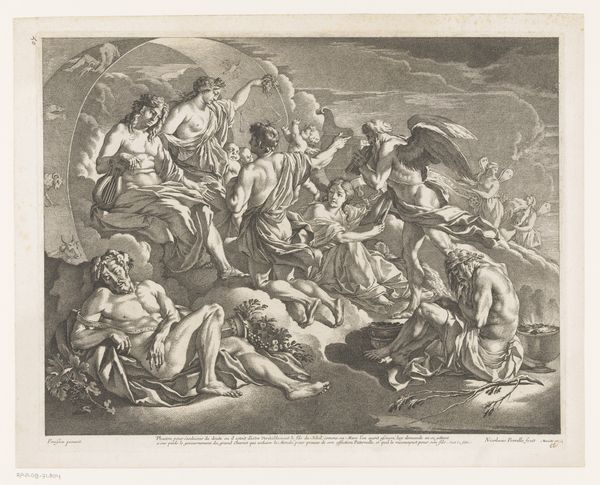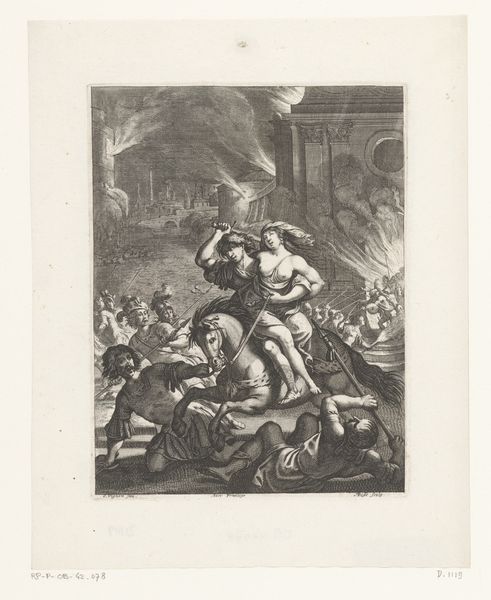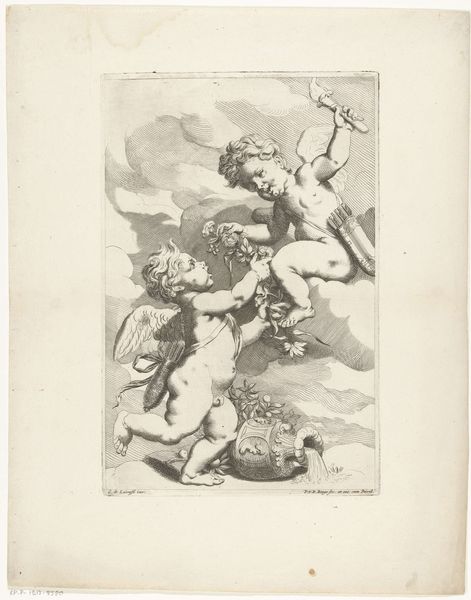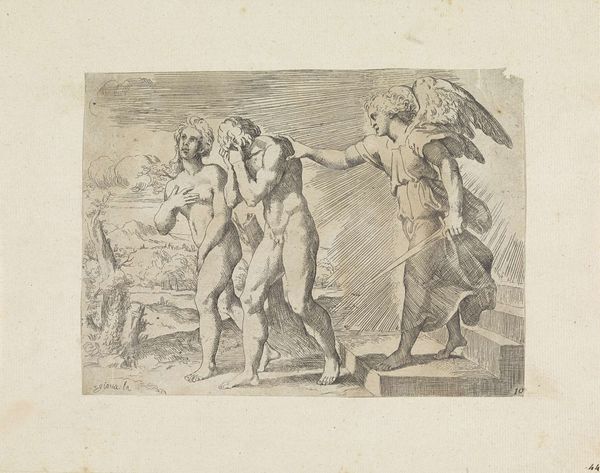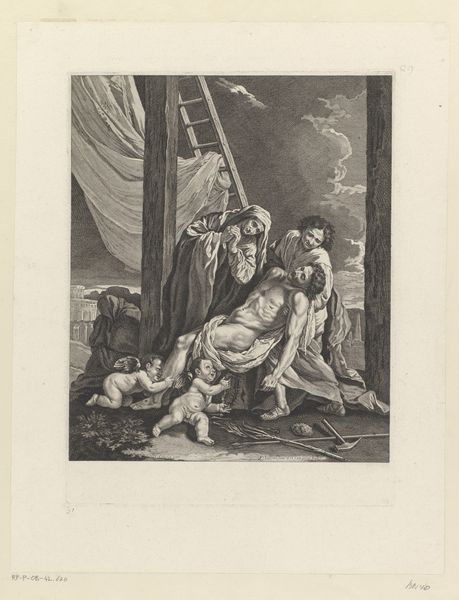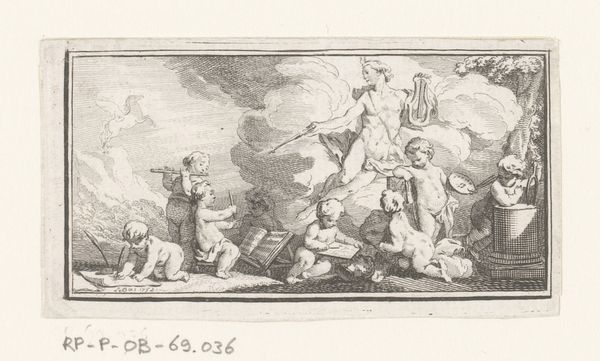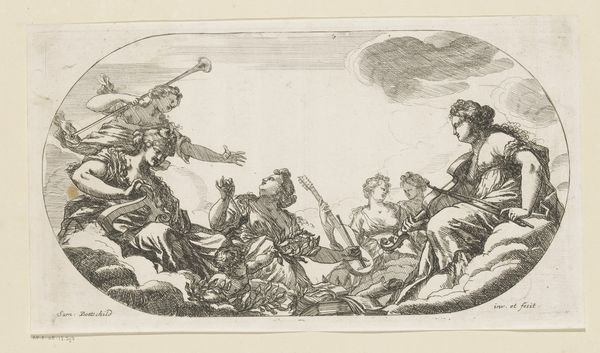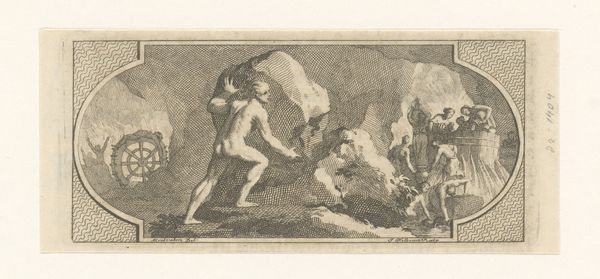
engraving
#
allegory
#
baroque
#
old engraving style
#
figuration
#
classicism
#
history-painting
#
engraving
Dimensions: height 54 mm, width 117 mm
Copyright: Rijks Museum: Open Domain
Curator: This is Jacob Folkema's "Jupiter en Aegina," an engraving from 1729 now residing in the Rijksmuseum. It's a striking depiction of a scene steeped in classical mythology. Editor: The first thing that strikes me is its intensity despite its modest scale. There's so much implied motion, even drama, rendered with the precise hand of the engraver. The storm seems to rage within the confines of the frame. Curator: Indeed. Folkema masterfully employs the engraving technique to capture the scene. Looking closely, you can observe how he uses a network of fine lines and cross-hatching to model the forms and create tonal variations, particularly in Jupiter's swirling cloak and Aegina’s distraught figure. Editor: The production process must have been very meticulous. Considering the social context in which this print would circulate, this artwork served as a medium to perpetuate both a social status and classical learnings. It emphasizes intellectual craftsmanship and accessibility as key values of a print's culture. Curator: Precisely. And it prompts questions about power dynamics – the literal and figurative thunder wielded by Jupiter. Aegina's pose and placement convey her vulnerability, her position relative to the supreme authority of Jupiter. It is an articulation of gender and divine hierarchy. Editor: Thinking about the labour embedded in its production brings other questions to my mind: who engraved this plate? Under what economic conditions did they work? What type of workshop was involved in its production and distribution? And was it an exclusive object only to be consumed by collectors, or was it meant for more extended distribution and viewing? Curator: These are fascinating layers of context that help us interpret Folkema's "Jupiter en Aegina" beyond a simple illustrative scene from mythology. We’re faced with issues of mythology, identity, but also economics that converge to deliver an articulate social message of its time. Editor: It is an impressive instance where craft meets narrative. From materials used to cultural referents employed, all is strategically laid in the service of class representation and its aesthetic canon. Curator: Ultimately, by investigating the nexus of myth and power embodied in this small engraving, we find reflections of larger social orders and power relationships. Editor: Yes, it really does force us to consider the means and intentions of production with themes of classical learnings and mythologies.
Comments
No comments
Be the first to comment and join the conversation on the ultimate creative platform.
